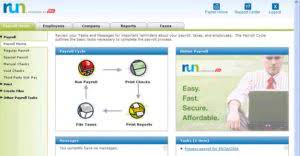
The original cost of the equipment would be depreciated at 33.3% on the straight-line method. Similar to the tax shield offered in compensation for medical expenses, charitable giving can also lower a taxpayer’s obligations. In order to qualify, the taxpayer must use itemized deductions on their tax return. The deductible amount may be as high as 60% of the taxpayer’s adjusted gross income, depending on the specific circumstances.

How to Calculate the Depreciation Tax Shield

The use of a depreciation tax shield is most applicable in asset-intensive industries, where there are large amounts of fixed assets that can be depreciated. Conversely, a services business may have few (if any) fixed assets, and so will not have a material amount of depreciation to employ as a tax shield. Similarly, the depreciation tax shield increases as the amount of allowable depreciation increases.
Tax Shield: How to Benefit from Tax Shield in Your Capital Forecasting
This is one of the ways companies manage their tax liabilities and improve cash flows. In summary, depreciation and amortization aren’t mere accounting entries; they’re strategic tools. By understanding their impact, businesses can optimize tax savings, enhance cash flow, and build financial resilience. So, next time you see those quiet heroes on your financial statements, nod appreciatively—they’re working hard to shield your wealth. Depreciation tax shields are important because they can improve a company’s cash flow by reducing its tax liability. They also make capital-intensive investments more attractive because the higher the investment in depreciable assets, the greater the potential tax shield.
Example: Depreciation Method Tax Impacts
Excessive debt can lead to financial instability, so striking the right balance is crucial. Always consult with tax professionals and financial advisors to tailor strategies to your specific situation. In order to calculate the depreciation tax shield, the first step is to find a company’s depreciation expense. Depreciation expense is an accrual accounting concept meant to “match” the timing of the fixed assets purchase—i.e. Capital expenditure (Capex)—with the cash flow generated from fixed asset over a period of time. A firm understanding of the corporate tax rate is essential for accurate calculations.
- This can make previously marginal projects more viable, offering a clearer view of potential returns.
- The recognition of depreciation causes a reduction to the pre-tax income (or earnings before taxes, “EBT”) for each period, thereby effectively creating a tax benefit.
- Maintaining detailed records is crucial to substantiate these deductions during audits.
- In this section, we will explore various types of tax shields and provide insights from different perspectives.
- This depreciation tax shield reduces the investor’s taxable rental income by $7,692 annually, enhancing cash flow.

It is important adjusting entries to understand the different types of tax shields and how they can impact financial planning. In this section, we will explore various types of tax shields and provide insights from different perspectives. Let’s consider a practical example to see how a tax shield works in real life.
In the U.S., the corporate tax rate has shifted over the years, with the Tax Cuts and Jobs Act of 2017 setting it at 21%. Businesses must stay informed about tax policy changes, as even minor adjustments can affect the effectiveness of their tax shields. Explore how tax shields optimize financial strategies through deductible items and calculations, influencing Coffee Shop Accounting capital decisions effectively. This tax shield reduces the company’s taxable income by $12,500 each year, effectively lowering its tax liability.
- Depreciation allows businesses to spread out the cost of an asset over its useful life.
- According to the Internal Revenue Code (IRC) Section 163, businesses can deduct interest paid or accrued on indebtedness within the taxable year.
- Below, we take a look at an example of how a change in the Depreciation method can have an impact on Cash Flow (and thus Valuation).
- Tax Shield is a crucial concept in capital forecasting that allows businesses to benefit from tax advantages.
- As you can see above, taxes are $20 without Depreciation vs. $16 with a Depreciation deduction, for a total cash savings of $4.
Tax shields differ between countries and are based on what deductions are eligible versus ineligible. The value of these shields depends on the effective tax rate for the corporation or individual (being subject to a higher rate increases the value of the deductions). The tax shield refers to the amount of tax that has been saved by claiming depreciation as an expense.

Understanding a Tax Shield
With the two methods clarified, let’s look at the Cash Flow impact of each approach. In the section below, we cover two of the most common methods and their Cash Flow and Valuation impacts. There are a variety of deductions that can shield a company depreciation tax shield (or Individual) from paying Taxes. The before-tax cost of training program is $70,000 and after-tax (or net-of-tax) cost of training program is $42,000.
- They can take different forms, such as deductible expenses, tax credits, or depreciation allowances.
- A Tax Shield is an allowable deduction from taxable income that results in a reduction of taxes owed.
- Tax-efficient investment strategies are cornerstones of investing for high net-worth individuals and corporations, whose annual tax bills can be very high.
- For example, if a company has cash inflows of USD 20 million, cash outflows of USD 12 million, its net cash flows before taxation work out to USD 8 million.
- The Debt used in the purchase creates Interest Expense that reduces the acquired Company’s Tax bill.
- Accelerated depreciation is a tool for taxpayers to defer the payment of income tax until some later years by deferring the recognition of a portion of taxable income.
- In the section below, we cover two of the most common methods and their Cash Flow and Valuation impacts.
Formula Breakdown

When deciding between debt or equity financing, the tax shield often makes debt more attractive due to its tax-deductible interest payments. To increase cash flows and to further increase the value of a business, tax shields are used. Depreciation refers to the systematic allocation of the cost of an asset over its useful life.

